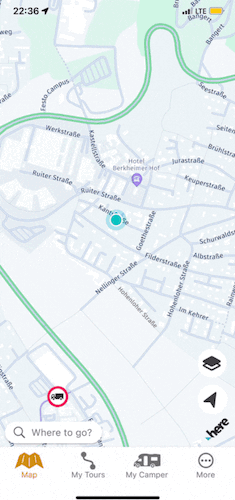A safe bet: why connected safety is taking over software defined vehicles
Maja Stefanovic — 05 June 2025
6 min read
22 August 2023

2023 is set to be the year that automatic emergency braking becomes the norm.
In May, the US Department of Transportation proposed that all new vehicles have a “more effective" version of automatic emergency braking (AEB) and then a month later, the same proposal was put forward for heavy-duty vehicles like trucks. If both proposals are passed into law, the innovative safety feature will change the way we drive but what is AEB and how does it work?


Aimed at preventing or reducing the severity of frontal collisions, AEB systems sensors continuously monitor the vehicle's surroundings, including the road, traffic, and pedestrians. Depending on the vehicle, these sensors could be radar, camera-based, lidar, or ultrasonic sensors, each with its own strengths and weaknesses.
For example, radar sensors are great at detecting large objects even in poor weather conditions, while cameras can identify smaller obstacles and interpret road signs.
If the AEB system detects a potential danger, it sends a signal to the vehicle's controller or computer. The computer then uses complex algorithms to determine if the situation requires intervention.
Once the sensors have gathered data, it's up to the vehicle's computer system to interpret it. This is the "brain" of the AEB system. It processes the sensor data in real time, determining if there's a risk of a crash based on factors like the speed of your vehicle, the distance to the obstacle, and your current trajectory. If it detects and predicts a potential collision, it alerts the driver or, in some cases, applies the brakes without the need for driver intervention.
There are two types of AEB systems: forward-collision warning (FCW) and automatic emergency braking. |
The FCW system uses sensors to detect obstacles in front of the vehicle and alerts the driver with a visual or audible warning if a collision is imminent. |
The AEB system, on the other hand, goes one step further and actually applies the brakes automatically to avoid a collision or reduce its severity. |
There are two types of AEB modes: interventional and collision avoidance. |
Interventional AEB systems intervene in the event of an imminent collision by applying the brakes to minimize the impact or avoid the collision completely. |
Collision avoidance AEB systems alert the driver to brake and respond with a warning signal if the driver does not react quickly enough. |
Of the two AEB modes, they can be categorized into two types: "low-speed" and "high-speed". |
Low-speed systems operate at speeds up to 30 km/h, especially for urban driving, and are designed to prevent minor accidents, such as those that occur in congested traffic. |
High-speed AEB systems operate at speeds of around 80-100 km/h and are designed to prevent or mitigate serious crashes, such as those that happen on highways. |
It's important to note that various factors, including weather conditions, speed, and the size of the obstacle can influence the effectiveness of AEB. Some systems may not work effectively if the sensors are blocked by dirt, ice, or snow.
In the near future, systems like AEB will only become more effective, making our journeys safer and smoother. And with AEB technology becoming more widespread and standard in vehicles, we can expect to see a significant decrease in collisions and injuries on our roads. So next time you're on the road, take a moment to appreciate the silent guardian that's always looking out for you — your car's AEB system.
As we advance toward a safer future, Intelligent Speed Assistance (ISA) is a key player in revolutionizing how we drive. Mandatory in all new cars in the EU — as well as a complementary safety system to AEB — ISA helps makes roads safer and reduce crashes by identifying speed limits accurately.
HERE ISA Map leverages ISA technology to accurately identify speed limits across the EU — even when you can't see any road signs — by using a combination of camera recognition and location data. HERE ISA Map works in tandem with other mandatory safety systems introduced by the new EU regulation, such as autonomous emergency braking, emergency lane-keeping systems, driver drowsiness and attention warning systems to make our roads safer.
Key features of HERE ISA Map |
* Unmatched accuracy: Its advanced technology combines camera recognition and location data to ensure precise speed limit information at all times. |
* Enhanced road safety: Through visual and audio cues, drivers are made aware of speed limits, helping to improve the safety of automated driving features and significantly reduce road incidents. |
* Optimized fuel consumption: By adhering to speed limits, drivers can also benefit from optimized fuel consumption. |
* Complements mandatory safety systems: HERE ISA Map works seamlessly with other obligatory safety systems such as autonomous emergency braking, emergency lane-keeping systems, and driver drowsiness and attention warning systems. |

Caroline Christie
Contributor
Share article

Caroline Christie
Contributor
Maja Stefanovic — 05 June 2025
Maja Stefanovic — 28 May 2025
Ian Dickson — 22 May 2025
Why sign up:
Latest offers and discounts
Tailored content delivered weekly
Exclusive events
One click to unsubscribe